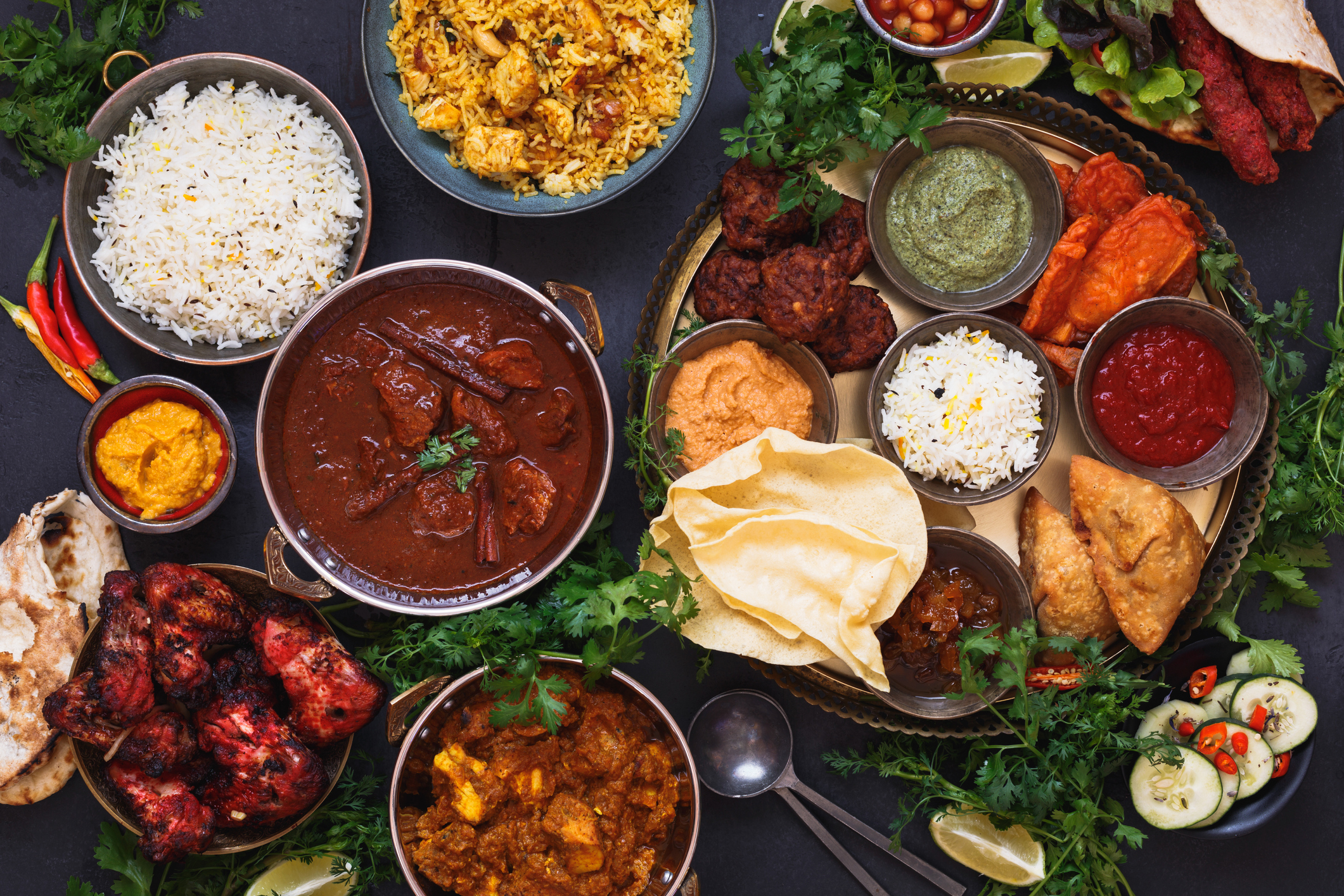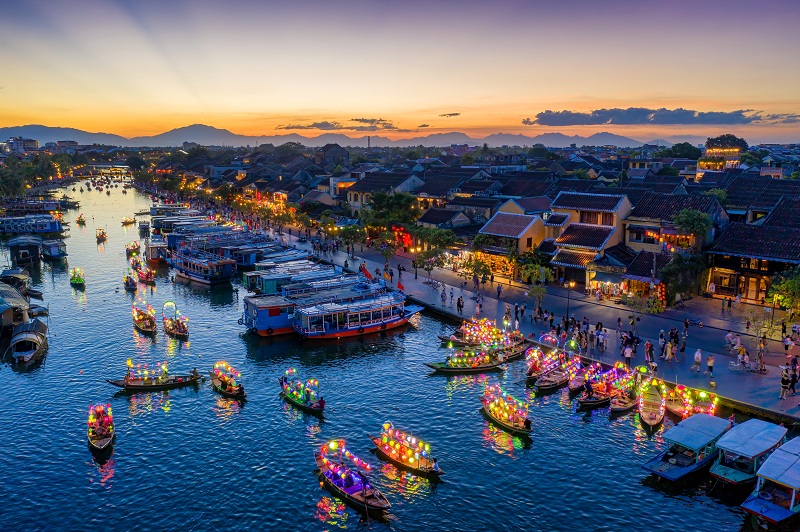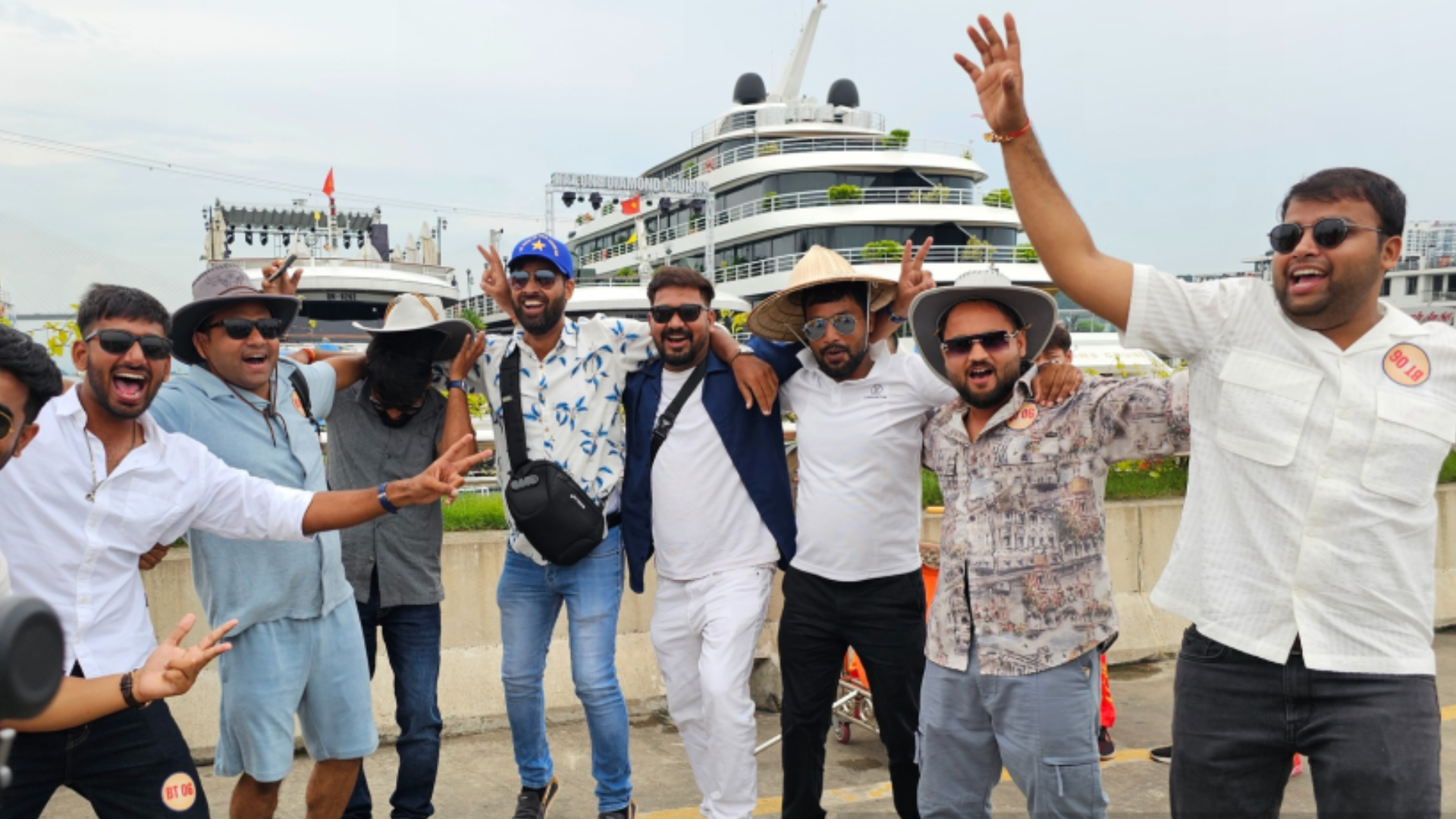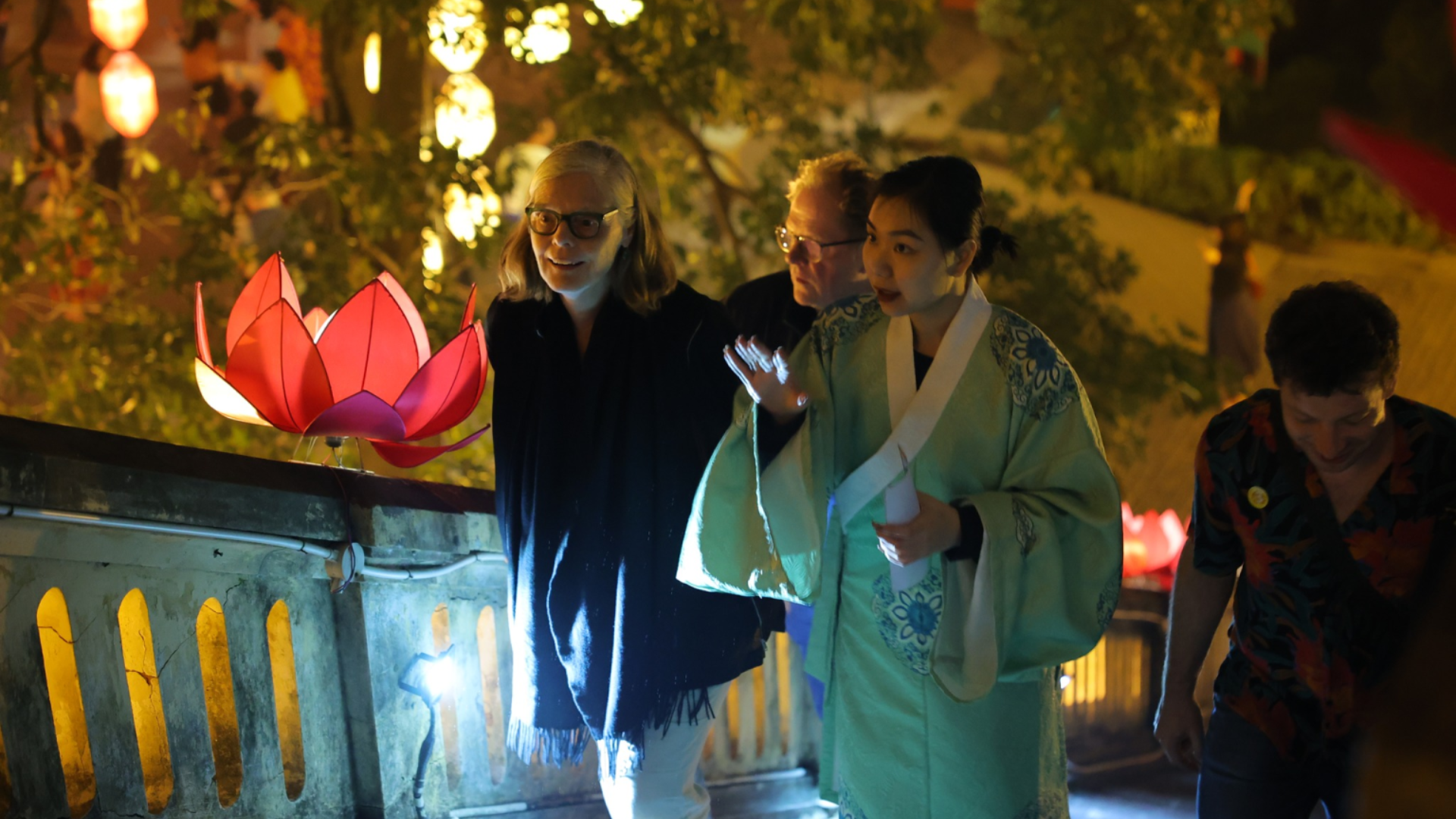The Imperial Citadel of Thang Long, a UNESCO World Heritage Site in the heart of Hanoi, holds the secrets of over 1,000 years of Vietnam’s Dai Viet civilization. Celebrated by India Times as a must-visit for its historical and cultural depth, this iconic site is a highlight of any Ha Noi Daily Tour for Indian travelers. Comparable to India’s majestic forts like Agra Fort, the citadel unveils a journey through ancient architecture, archaeological treasures, and Vietnam’s enduring spirit, all at an affordable entry fee (INR 100/VND 30,000).
Perfect for Hanoi in autumn (September–November), this Hanoi Travel Guide offers a comprehensive, segmented plan for Indian tourists, families, history buffs, and culture enthusiasts, seeking to uncover the citadel’s hidden stories during their Vietnam Travel adventure.
Introduction to the Imperial Citadel of Thang Long
Located at 19C Hoang Dieu, Ba Dinh District, Hanoi, the Imperial Citadel of Thang Long is a historical masterpiece that served as Vietnam’s political, cultural, and military hub for over a millennium. Established in 1010 by Emperor Ly Thai To when he relocated the capital from Hoa Lu to Thang Long (modern-day Hanoi), the citadel spans 18,395 hectares, encompassing key sites like Doan Mon, Kinh Thien Palace, Hanoi Flag Tower, Hau Lau, and the 18 Hoang Dieu archaeological site. Recognized by UNESCO as a World Heritage Site in 2010, it offers Indian travelers a window into Vietnam’s rich history, akin to India’s ancient capitals like Hampi or Fatehpur Sikri. Its proximity to landmarks like Ho Chi Minh Mausoleum makes it a seamless addition to a Ha Noi Daily Tour.

Historical Significance of Thang Long Imperial Citadel
The citadel’s history unveils the secrets of Vietnam’s resilience across dynasties and conflicts, mirroring India’s own storied landmarks:
-
- Ly Dynasty (1010–1225): Established as the capital, the citadel featured grand palaces like Kinh Thien and Thien An, fortified with earthen walls and moats, showcasing architectural prowess comparable to India’s early medieval forts.
-
- Tran Dynasty (1225–1400): Strengthened as a defensive stronghold, it played a key role in victories against Mongol invasions, reflecting Vietnam’s military might.
-
- Ho Dynasty (1400–1407): Renamed Dong Do, it saw limited development under Ho Quy Ly.
-
- Ming Occupation (1407–1427): Endured significant destruction under Chinese rule, marking a challenging period.
-
- Early Le Dynasty (1428–1527): Restored as Dong Kinh, with Kinh Thien Palace built in 1428, it became a symbol of resurgence.
-
- Mac and Le Trung Hung (1527–1788): Faced destruction and rebuilding amid civil wars but retained political significance.
-
- Tay Son Dynasty (1788–1802): Saw neglect as military priorities took precedence.
-
- Nguyen Dynasty (1802–1945): Lost its capital status when the court moved to Hue, serving as Hanoi’s regional fortress.
-
- Modern Era: Used as a military base during French and American wars, with major archaeological discoveries at 18 Hoang Dieu in 2004 revealing relics from multiple dynasties.
Why It Matters: The citadel is a testament to Vietnam’s enduring spirit, akin to India’s Red Fort, symbolizing national pride and cultural continuity.
Key Attractions in the Imperial Citadel of Thang Long
The citadel offers Indian travelers a rich array of architectural and historical highlights, each revealing a piece of its storied past:
Doan Mon: The Grand Entrance
Doan Mon, the main gate, is a majestic portal to the citadel’s core, symbolizing royal authority. Its five arched pathways—the central one reserved for the emperor, feature intricate stone and brickwork, with a curved-roof tower evoking India’s palace gates in Jaipur.
-
- What to Do: Walk through the central arch for a regal experience and photograph the gate’s symmetrical design.
-
- Why Indian Travelers Love It: The gate’s grandeur mirrors India’s historic forts, offering a sense of royal heritage.
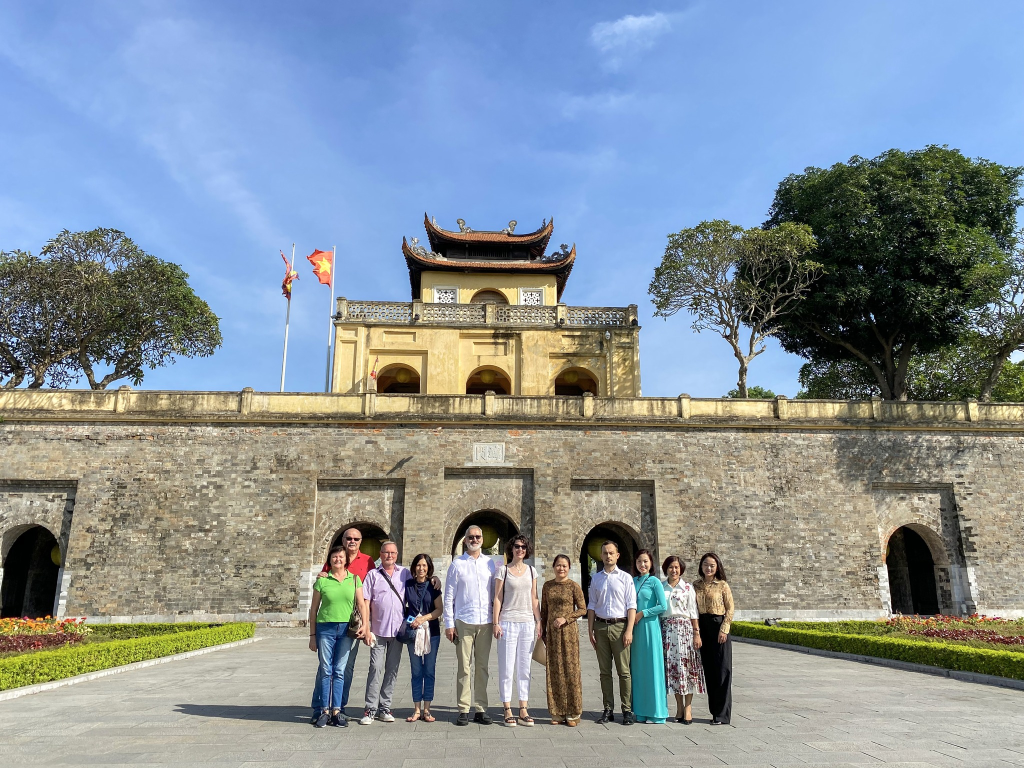
Kinh Thien Palace: The Heart of Power
Once the citadel’s central palace, Kinh Thien was where emperors held court and conducted ceremonies. Though only the foundation and dragon-carved stone steps from the 15th-century Le Dynasty remain, its historical weight is palpable, akin to India’s Diwan-i-Aam in Delhi.
-
- What to Do: Explore the stone steps and imagine royal assemblies. Join guided tours for historical insights (INR 300–600/VND 100,000–200,000).
-
- Why Indian Travelers Love It: The spiritual and political significance resonates with India’s royal past.
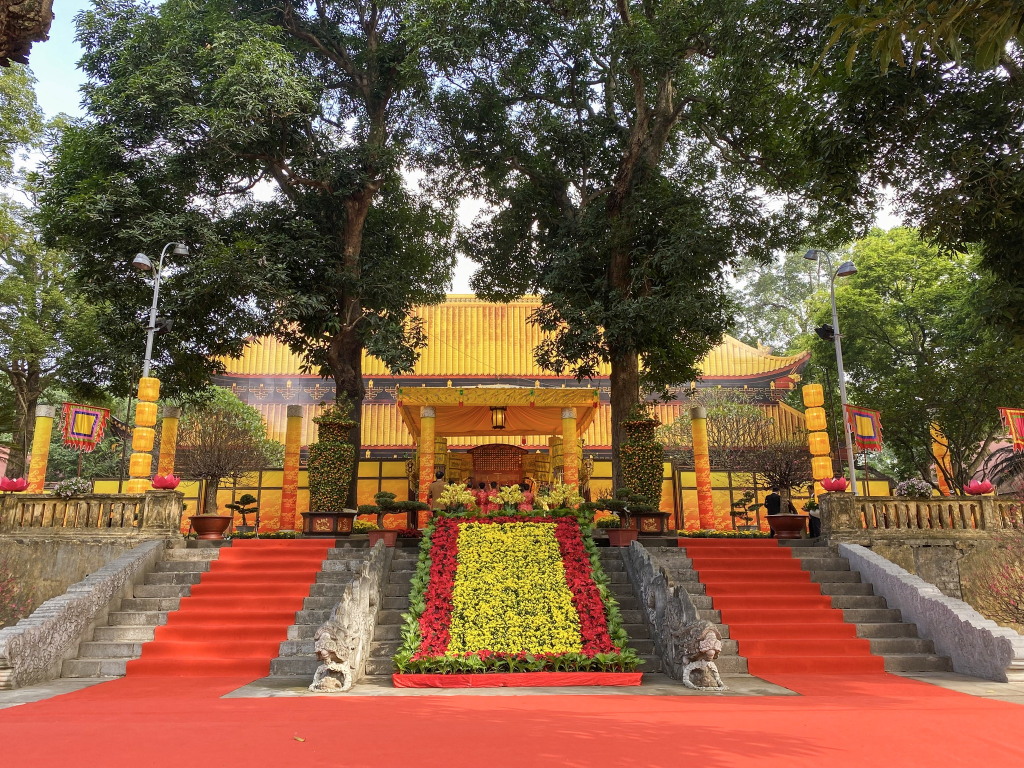
Hanoi Flag Tower: A Symbol of Resilience
Built in 1812 under the Nguyen Dynasty, this 33-meter tower is one of Hanoi’s enduring landmarks, surviving wars intact. Its three-tiered square base and hexagonal pillar, topped with a flag, echo India’s Qutub Minar in design and symbolism.
-
- What to Do: Climb to the observation platform (free with entry) for city views and photograph the tower’s silhouette.
-
- Why Indian Travelers Love It: Its historical and patriotic significance mirrors India’s national monuments.
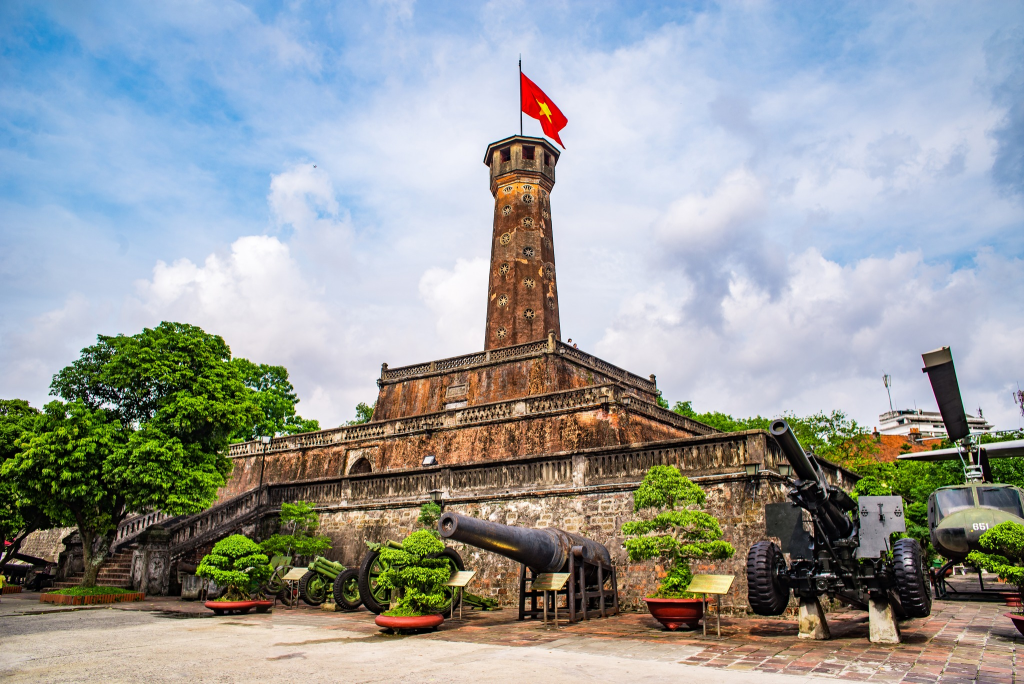
Hau Lau (Princess Palace): A Royal Retreat
Hau Lau, believed to be the residence of royal consorts and princesses, offers a glimpse into the private lives of Vietnam’s royalty. Its high foundation and serene design, cooling in summer and warm in winter, resemble India’s zenana quarters in Mughal palaces.
-
- What to Do: Explore the tranquil courtyard and admire the subtle elegance of the architecture.
-
- Why Indian Travelers Love It: The intimate royal setting evokes India’s palace heritage.
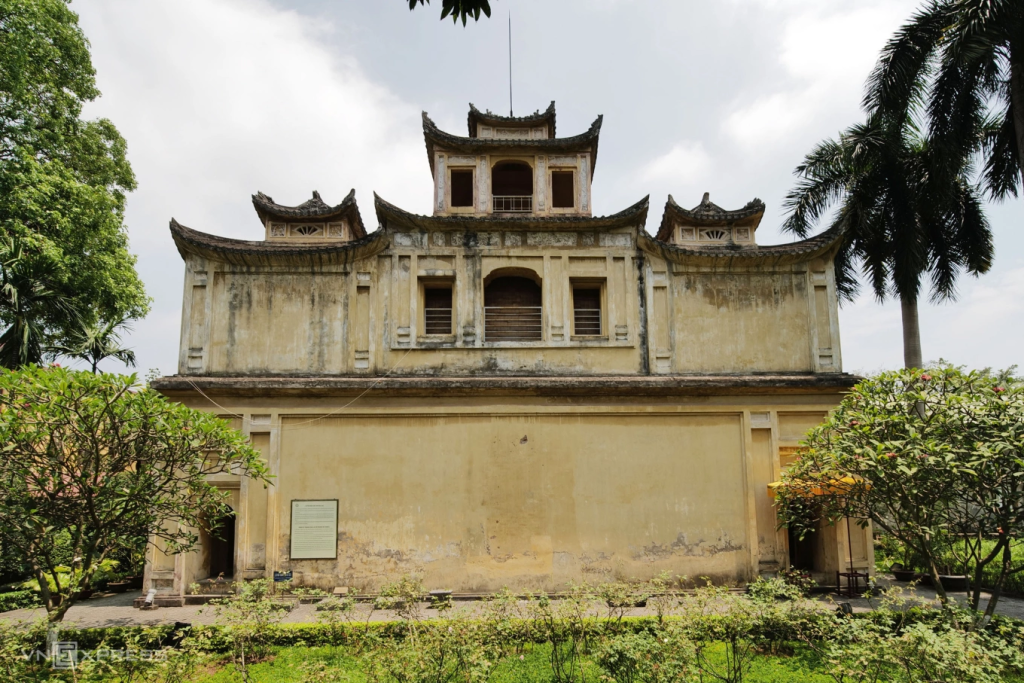
North Gate (Cua Bac): A War-Tested Relic
The North Gate, built under the Nguyen Dynasty, bears bullet marks from the 1882 French attack, symbolizing Vietnam’s resistance. Its arched stone design and watchtowers are reminiscent of India’s fortified gates in Jaisalmer.
-
- What to Do: Inspect the battle scars and photograph the gate’s sturdy architecture.
-
- Why Indian Travelers Love It: The gate’s wartime history resonates with India’s freedom struggle sites.
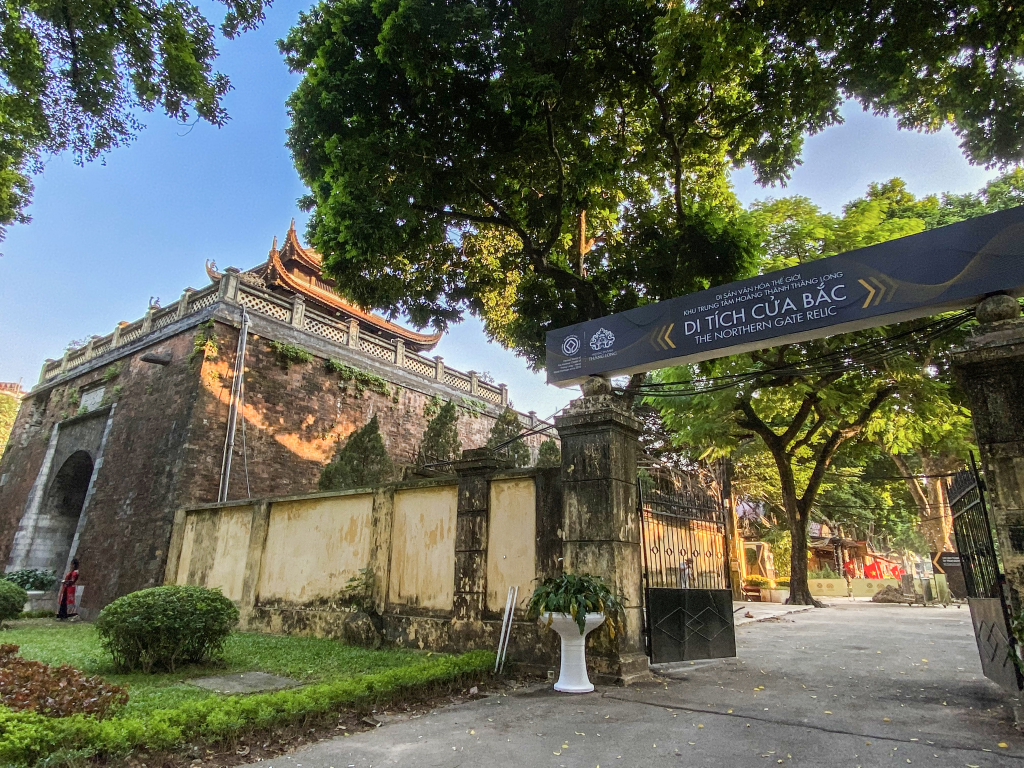
18 Hoang Dieu Archaeological Site: A Window to the Past
Uncovered in 2004, this site reveals foundations, ceramics, and drainage systems from the Ly to Nguyen dynasties, offering a tangible connection to Vietnam’s past, similar to India’s archaeological sites like Lothal.
-
- What to Do: Visit the exhibition hall to view artifacts and interactive displays (included in entry).
-
- Why Indian Travelers Love It: The archaeological depth appeals to India’s history enthusiasts.
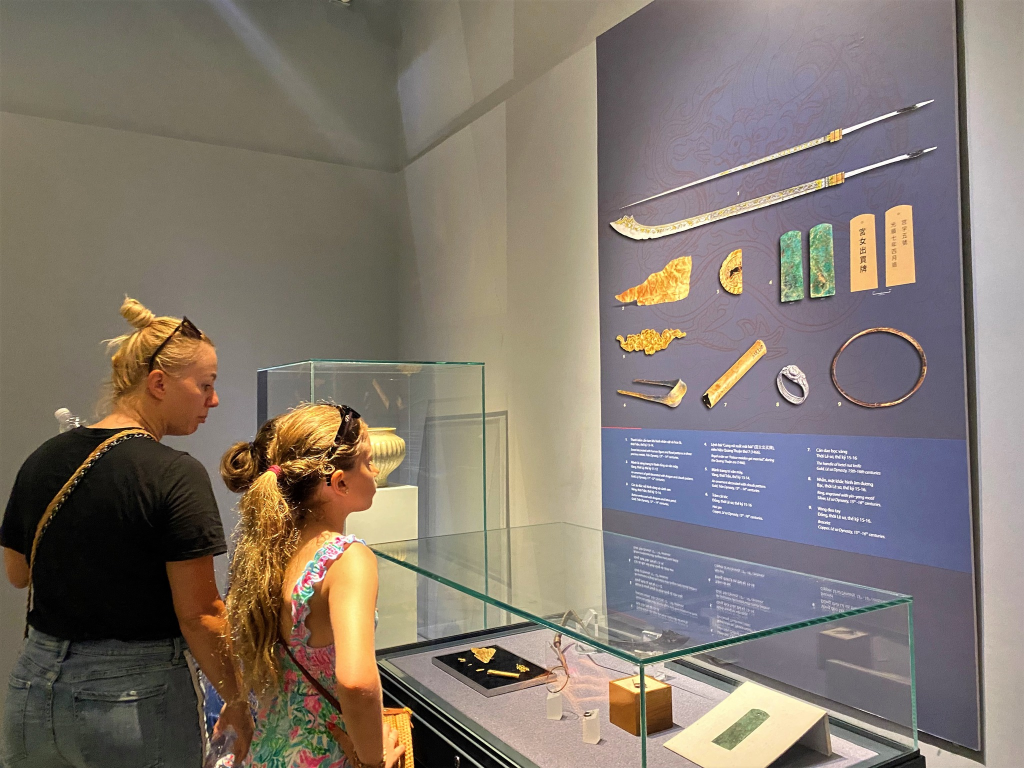
Immersive Experiences at the Imperial Citadel of Thang Long
The citadel offers engaging activities for Indian travelers, blending history with cultural immersion:
-
- Traditional Costume Photography: Rent Vietnamese ao dai or royal attire (INR 150–300/VND 50,000–100,000) for photos at Doan Mon or Kinh Thien, akin to dressing up at Indian heritage sites.
-
- Guided Tours: Join group tours (INR 300–600/VND 100,000–200,000) or hire private guides for detailed historical narratives, available in English.
-
- Exhibitions and Virtual Reality: Explore artifact displays and AR/VR experiences showcasing the citadel’s past (included in entry), similar to India’s museum interactives.
-
- Craft Workshops: Try pottery or traditional painting at on-site stalls (INR 150–300/VND 50,000–100,000), evoking India’s handicraft bazaars.
-
- Cultural Events: Attend seasonal festivals or performances, like folk music or lantern displays, especially during spring (January–March).
Practical Tips for Visiting the Imperial Citadel of Thang Long
How to Get There
Located near Ho Chi Minh Mausoleum, the citadel is easily accessible:
-
- By Motorbike/Car: From Hoan Kiem Lake, drive via Dien Bien Phu to Hoang Dieu (10 minutes, parking: INR 15–150/VND 5,000–50,000). Use Xanh SM eco-friendly taxis or bikes (INR 300–600/VND 100,000–200,000 round-trip, book via 1900 2088 (tel:19002088) or the Xanh SM app).
-
- By Bus: Take routes 9, 22, 32, or 45 (INR 30/VND 10,000) to Dien Bien Phu or Nguyen Tri Phuong stops, a short walk away.
Tickets and Opening Hours
-
- Hours: 8:00 AM–5:00 PM, Tuesday–Sunday (closed Mondays).
- Tickets: Adults: INR 100/VND 30,000; Students: INR 50/VND 15,000; Children under 15: Fr

Best Time to Visit
-
- Spring (January–March): Cool weather (15–25°C) and cultural festivals make it ideal for exploration.
-
- Autumn (September–November): Dry, pleasant weather (20–28°C) and clear skies enhance photography and outdoor tours, perfect for Hanoi in autumn.
Travel Tips for Indian Travelers
-
- Dress Code: Wear modest, comfortable clothing (no shorts or sleeveless tops) for this sacred site, similar to India’s temples or forts. Light layers suit autumn weather.
-
- Footwear: Choose sneakers or flat shoes for extensive walking across the citadel’s grounds.
-
- Hydration: Bring water to stay refreshed during long tours.
-
- Respect the Site: Avoid littering and follow site rules to preserve the heritage, akin to respecting India’s monuments.
-
- Preparation: Research the citadel’s history beforehand to deepen your appreciation, much like studying India’s historical sites.
-
- Photography: Use a wide-angle lens or smartphone with good zoom to capture Doan Mon and Hanoi Flag Tower.
-
- Currency: Carry small Vietnamese Dong notes (INR 1 ≈ VND 300) for entry fees or snacks. Cards are accepted at major vendors.
-
- Language: Basic English is understood, but learn “Cảm ơn” (thank you) to connect with locals.
-
- Dietary Needs: Request vegetarian or Jain-friendly meals at nearby eateries like Quan An Ngon (18 Phan Boi Chau, INR 150–300/VND 50,000–100,000).
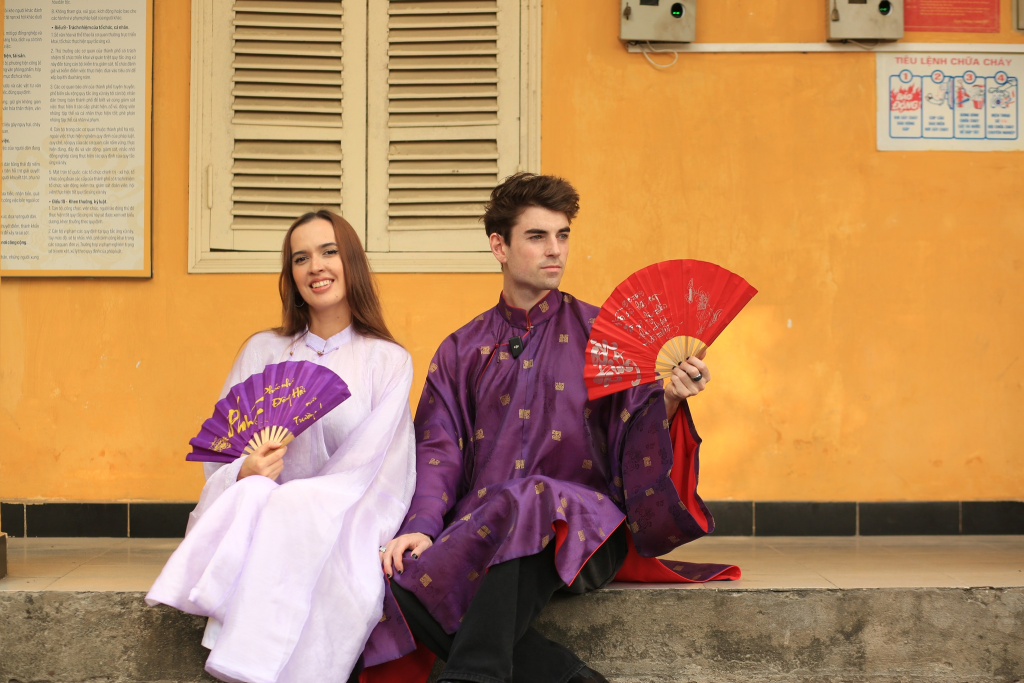
Why Indian Travelers Should Visit the Imperial Citadel of Thang Long
-
- Historical Depth: The citadel’s 1,000-year legacy, from Ly Thai To’s capital to modern discoveries, mirrors India’s ancient capitals, offering lessons in resilience and creativity.
-
- Architectural Marvels: From Doan Mon’s regal arches to Kinh Thien’s dragon steps, the citadel’s design echoes India’s intricate fort architecture.
-
- Cultural Immersion: Festivals, workshops, and exhibitions provide a vibrant experience, akin to India’s cultural fairs, connecting Indian travelers to Vietnam’s heritage.
-
- UNESCO Recognition: As a World Heritage Site, it elevates Vietnam’s global cultural stature, resonating with India’s own UNESCO sites like the Taj Mahal.
Sample Itinerary for a Ha Noi Daily Tour
Maximize your visit with this itinerary, blending the citadel with nearby attractions:
-
- 8:00 AM – Ho Chi Minh Mausoleum: Start with the flag-raising ceremony (free) and explore nearby One Pillar Pagoda (INR 50/VND 15,000).
-
- 10:00 AM – Imperial Citadel of Thang Long: Spend 2–3 hours exploring Doan Mon, Kinh Thien, Hanoi Flag Tower, and 18 Hoang Dieu (INR 100/VND 30,000). Join a guided tour for insights.
-
- 1:00 PM – Lunch: Enjoy vegetarian pho or bun cha at Quan An Ngon (INR 150–300/VND 50,000–100,000).
-
- 2:30 PM – Hoan Kiem Lake: Stroll around the lake and cross Huc Bridge to Ngoc Son Temple (INR 100/VND 30,000).
-
- 4:30 PM – Hanoi Old Quarter: Shop for souvenirs and sample street food (INR 150/VND 50,000).
-
- 7:00 PM – Hanoi Opera House: Photograph the illuminated facade (free) and relax at a rooftop café like Lofita Drinks (INR 100–200/VND 30,000–60,000).
Total Cost: INR 1,500–2,500/VND 500,000–800,000, including food, entry fees, and transport.
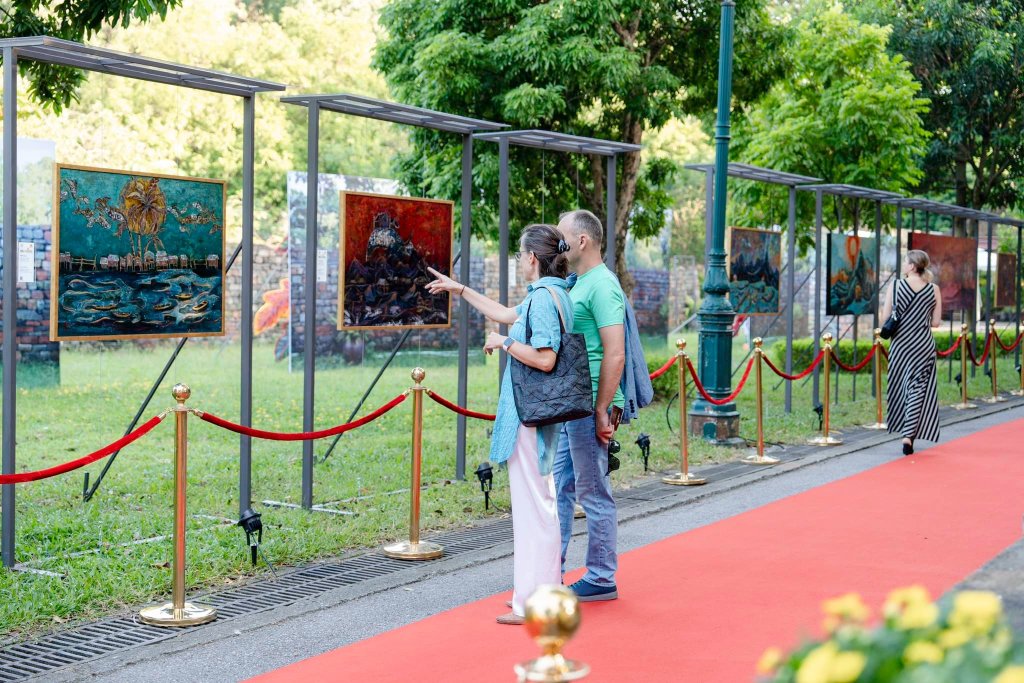
FAQ for the Imperial Citadel of Thang Long
-
- When was it built? In 1010, by Emperor Ly Thai To, marking Hanoi’s founding.
-
- Where is it located? 19C Hoang Dieu, Ba Dinh, Hanoi.
-
- How large is it? Spans over 18,000 hectares.
-
- How was it constructed? Built with a triple-fortress system: La Thanh (outer city), Hoang Thanh (imperial city), and Cam Thanh (forbidden city for the emperor).
The Imperial Citadel of Thang Long is a cornerstone of Vietnam’s heritage, offering Indian travelers a profound Ha Noi Daily Tour experience that unveils the secrets of a 1,000-year legacy. From the majestic Doan Mon to the archaeological treasures at 18 Hoang Dieu, this UNESCO site blends history, culture, and architecture in a way that resonates with India’s love for heritage. With affordable entry (INR 100) and the charm of Hanoi in autumn, plan your visit to this cultural gem for a journey that celebrates Vietnam’s timeless legacy and connects with India’s cultural soul.


